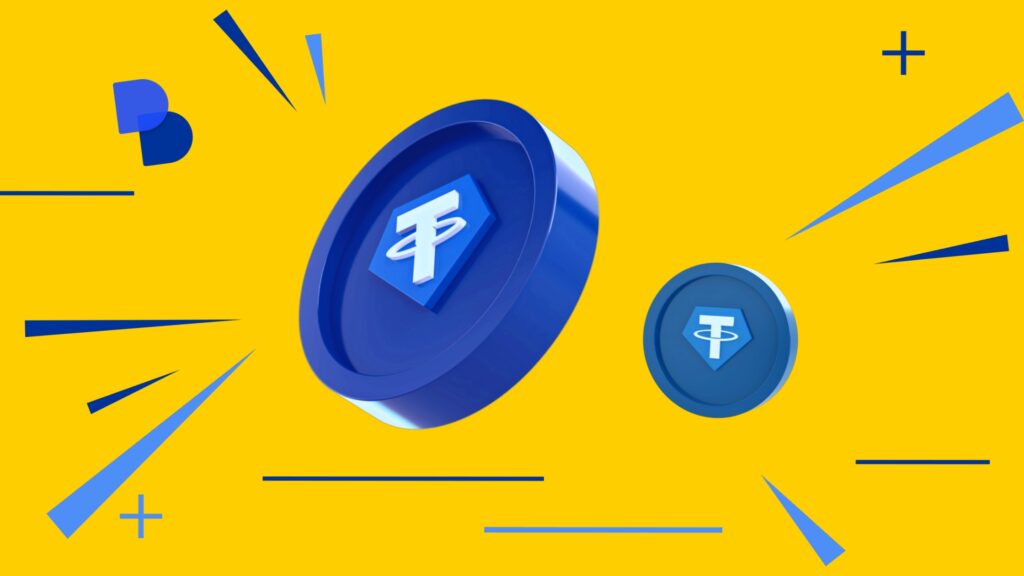Tether (USDT) is a platform that provides stablecoins which are pegged to the USD. The platform is intended to make it easier to utilize fiat currency digitally.
Tether (USDT) is a type of cryptocurrency called a stablecoin, which is designed to maintain a stable value relative to another asset, typically the US dollar. It was launched in 2014 by a company called Tether Limited.

The value of Tether is pegged to the US dollar, meaning that for every Tether token issued, there is a corresponding US dollar held in reserve. The idea is that Tether can be used as a digital alternative to the dollar, allowing for faster and cheaper transactions than traditional banking methods.
Tether has become popular in the cryptocurrency market as a means of quickly moving funds between different exchanges, as well as for traders to park their funds in a stable asset during times of volatility in other cryptocurrencies. However, Tether has also faced controversy over questions about whether it actually has the reserves to back up its claims of being fully backed by US dollars.
Who Founded Tether?
Tether was founded back in 2014 by the trio of Reeve Collins, Craig Sellars, and Brock Pierce, a former child actor in a few Disney movies. The original uptake for their stablecoin token, called Realcoin, was not great.
However, in 2015, Tether was purchased by iFinex Inc based in Hong Kong, which also owned the Bitfinex crypto centralized exchange, and the subsequent integration of the token into the Bitfinex ecosystem increased its popularity.
The Supply Of USDT
The supply of Tether (USDT) is not fixed and can fluctuate over time as new tokens are minted or redeemed. Tether tokens are created through a process called “minting,” in which Tether Limited, the company behind USDT, issues new tokens in exchange for US dollars or other cryptocurrencies. When new tokens are minted, the supply of USDT increases.
Similarly, Tether tokens can also be “burned,” or redeemed, in exchange for US dollars or other cryptocurrencies. When this happens, the supply of USDT decreases. The ability to redeem Tether tokens for US dollars is one of the key features that is supposed to maintain the stability of its value.
The total supply of Tether has grown significantly in recent years, from around $10 billion in early 2020 to over $70 billion as of early 2023. However, it is important to note that the actual amount of US dollars held in reserve by Tether Limited to back up these tokens have been the subject of controversy and scrutiny. Some critics have raised concerns that Tether may not have enough reserves to fully back up its outstanding tokens, which could have implications for the stability of its value.
What Makes Tether (USDT) Unique?
Tether is unique among cryptocurrencies because it is designed to maintain a stable value relative to another asset, typically the US dollar. This is in contrast to other cryptocurrencies like Bitcoin, which can be highly volatile and experience rapid price fluctuations.
The stability of Tether’s value is achieved through its peg to the US dollar. For every Tether token issued, there is supposed to be a corresponding US dollar held in reserve. This means that Tether can be used as a digital alternative to the dollar, allowing for faster and cheaper transactions than traditional banking methods, while also offering the stability of a fiat currency.
Tether is also unique in that it is widely used as a means of quickly moving funds between different cryptocurrency exchanges. This is because Tether can be easily transferred between different exchanges that support it, without the need to convert back to fiat currency.








